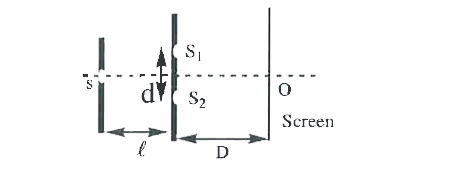identify the correct statement(s):
Ozone is a powerful oxidising agent as compared to O2
Ozone racts with KOHH and gives ann orange coloured solid KO3
There is a decrese in volume when ozone decomposed to form O2
The decomposition of O3 to O2 is exothermic
The correct Answer is:A, B, D
To identify the correct statements regarding ozone and its properties, we will analyze each statement one by one.
Step 1: Analyze Statement 1
Statement: Ozone is a powerful oxidizing agent as compared to oxygen.
Analysis: This statement is true. Ozone (O₃) can break down to form oxygen (O₂) and nascent oxygen (O), which is a highly reactive species. The presence of nascent oxygen gives ozone strong oxidizing properties, making it a more powerful oxidizing agent than molecular oxygen.
Step 2: Analyze Statement 2
Statement: Ozone reacts with KOH and gives an orange-colored solid KO3.
Analysis: This statement is false. When ozone reacts with potassium hydroxide (KOH), it forms potassium superoxide (KO₂), which is an orange-colored solid. KO₃ does not exist as a stable compound in this reaction.
Step 3: Analyze Statement 3
Statement: There is a decrease in volume when ozone decomposes to oxygen.
Analysis: This statement is false. The decomposition of ozone (2 O₃ → 3 O₂) results in an increase in the number of moles of gas (from 2 moles of ozone to 3 moles of oxygen). According to Avogadro's law, an increase in the number of moles leads to an increase in volume, not a decrease.
Step 4: Analyze Statement 4
Statement: Decomposition of ozone to oxygen is exothermic.
Analysis: This statement is true. The formation of ozone from oxygen is an endothermic process (it requires energy), and thus the reverse reaction (decomposition of ozone to oxygen) is exothermic, releasing energy.
Conclusion
After analyzing all statements, we find that:
- Correct Statements: 1 and 4
- Incorrect Statements: 2 and 3
Final Answer
The correct statements are 1 and 4.
---
Statement: Ozone is a powerful oxidizing agent as compared to oxygen.
Statement: Ozone reacts with KOH and gives an orange-colored solid KO3.
Statement: There is a decrease in volume when ozone decomposes to oxygen.
Statement: Decomposition of ozone to oxygen is exothermic.
After analyzing all statements, we find that:
- Correct Statements: 1 and 4
- Incorrect Statements: 2 and 3
The correct statements are 1 and 4.
Topper's Solved these Questions
- p-BLOCK ELEMENTSBOOK - VK JAISWAL ENGLISHCHAPTER - p-BLOCK ELEMENTSEXERCISE - MATCH THE COLUMN
24 Videos
- p-BLOCK ELEMENTSBOOK - VK JAISWAL ENGLISHCHAPTER - p-BLOCK ELEMENTSEXERCISE - ASSERTION REASON TYPE QUESTIONS
24 Videos
- p-BLOCK ELEMENTSBOOK - VK JAISWAL ENGLISHCHAPTER - p-BLOCK ELEMENTSEXERCISE - LEVEL 3 (PASSAGE TYPE)
17 Videos
- METALLURGYBOOK - VK JAISWAL ENGLISHCHAPTER - METALLURGYEXERCISE - ASSERTION-REASON TYPE QUESTIONS
29 Videos
- PERIODIC PROPERTIESBOOK - VK JAISWAL ENGLISHCHAPTER - PERIODIC PROPERTIESEXERCISE - MATCH THE COLUMN
11 Videos
Similar Questions
The vapour pressure of two miscible liquids A and B are 300 and 500 mm of Hg respectively.In a flask 2 moles of A are mixed with 6 moles of B.Further to the mixture, 32 g of an ionic non-volatile solute MCl (partically ionised mol.mass =70 u) were also added.Thus, the final vapour pressure of solution was found to be 420 mm of Hg.Then, identify the correct statement(s): (Assume the liquid mixture of A and B to behave ideally ).
View SolutionIdentify th correct statement(s):
View SolutionIdentify the correct statements
View Solutionidentify the correct statements:
View SolutionIdentify the correct statements
View SolutionIdentify the correct statements (s):
View SolutionConsider a hyperbola H : x2−y2 =k and a parabola P:y=x2 then identify the correct statements(S)
View SolutionThe figure shows a schematic diagram showing the arrangement of Youngs's Double Slit Experiment

Identify the correct statement(s) if the source slit S moved closer to S1S2, i.e., the distance l decreases
View Solutionif f(x) is a differential function such that f(x)=∫x0(1+2xf(t))dt&f(1)=e, then
Q. Identify the correct statements (s):
View SolutionThe figure shows a schematic diagram showing the arrangement of Young.s Double Slit Experiment

Identify the correct statement (s) if the source slit S moved closer to S1S2 i.e the distance l decreases
View Solution
